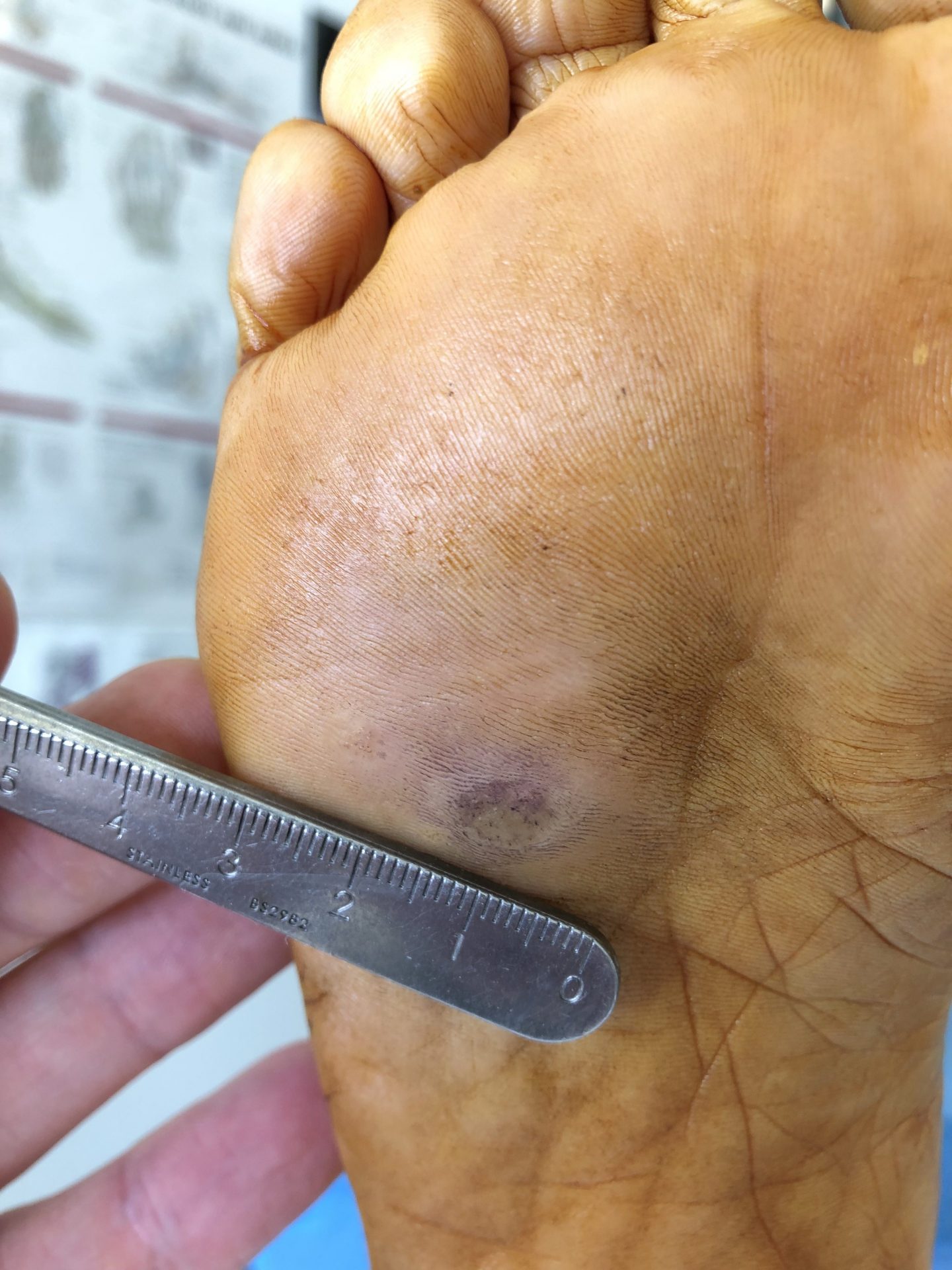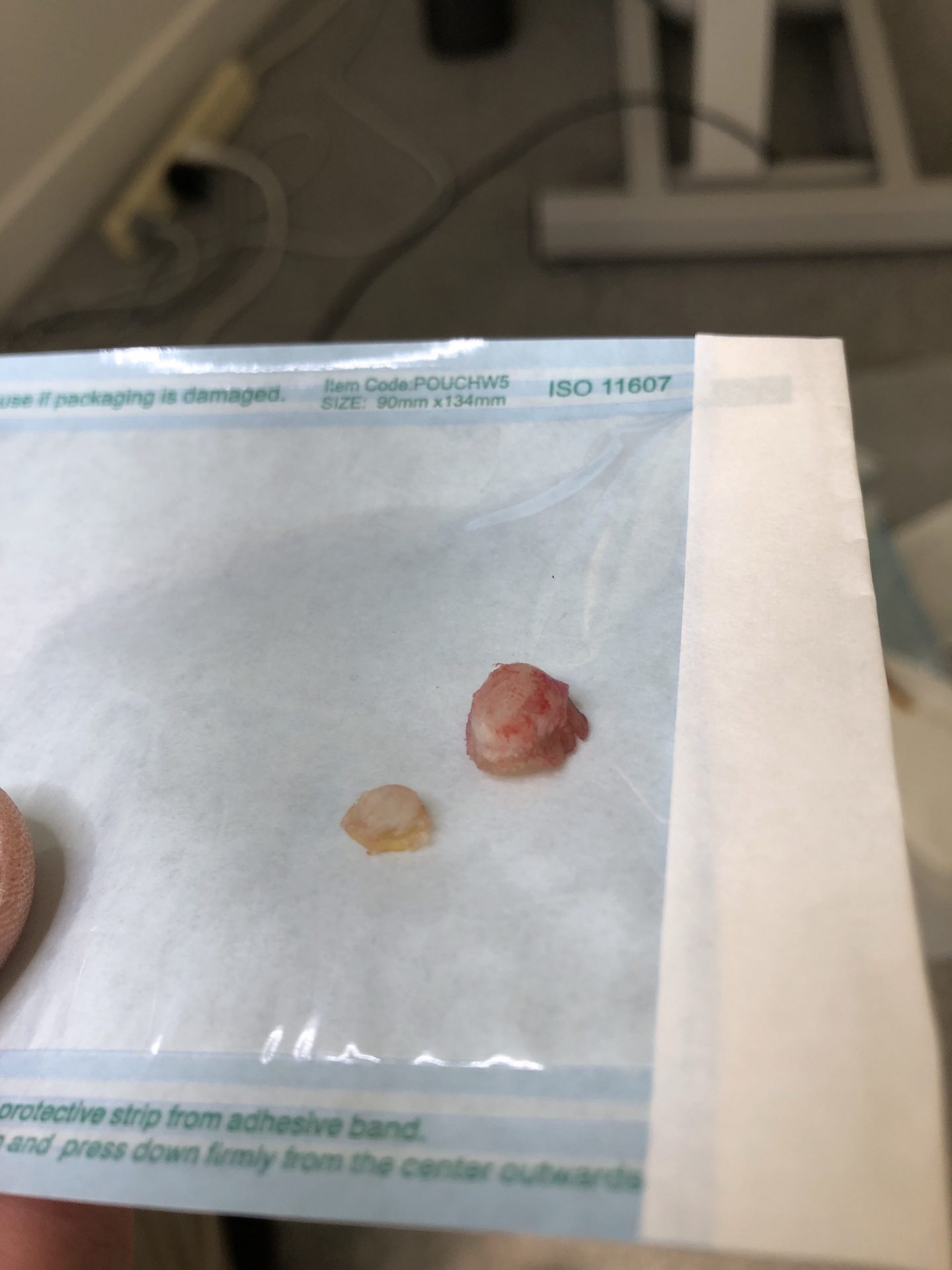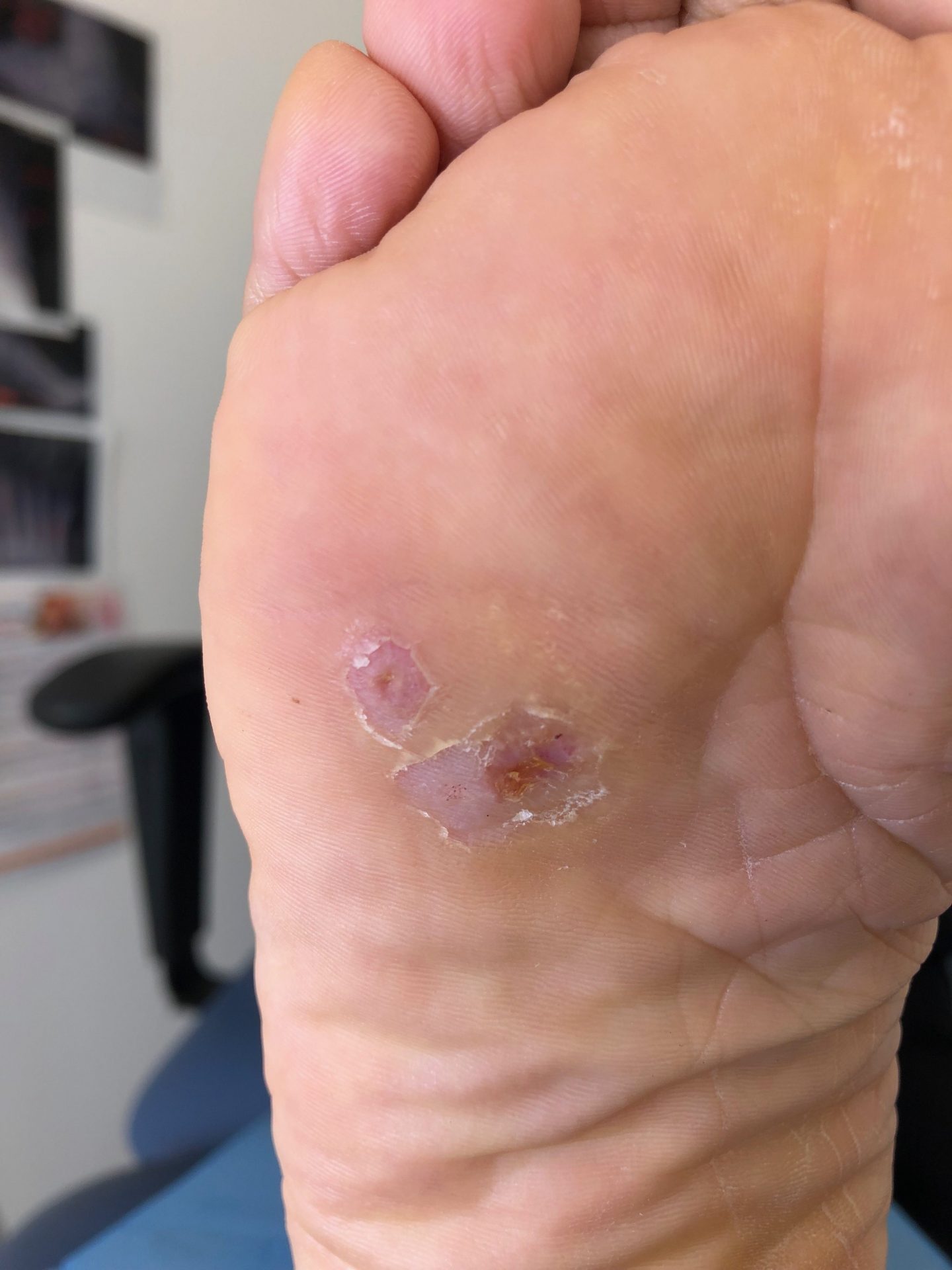
14 Mar Plantar Warts (Verrucae) – Removing foot warts procedure

Pre-op picture showing the size of the wart in the foot
Recently, we had a patient present to us with a common but very painful and serious problem on the bottom of her foot – plantar warts (verrucae). We successfully treated and got rid of the wart using a technique called a blunt dissection procedure for foot warts, so we thought we’d share with you how we did it and how you can get rid of your warts safely and effectively, too.
For confidentiality purposes, and with her permission, let’s call our patient Jenny, and yes that’s her foot in the image on the left.
For more before and after results of wart treatment from our clinic, see here.
Meet Jenny
Jenny is a healthy female who works at a local restaurant here in Masterton. This means she spends long days on her feet, and anything that causes discomfort or pain when walking will be very detrimental and frustrating for her. Jenny had been putting up with the wart for several years now in the hopes that it would go away on its own. She was both frustrated and embarrassed by the verruca and had enough.
While Jenny hadn’t had a plantar wart in the past, her partner had and successfully treated his warts with the help of our podiatrists some years ago.
About Foot Warts (Verrucae)
Because verrucae are caused by the Human Papillomavirus (HPV), they are contagious and spread within households through direct contact, particularly when sharing surfaces daily like showers.
Plantar warts look like rough, round lumps on the bottom of the feet that can vary in size from that of a seed to that of a golf ball. While some may have no pain or symptoms, others can feel tender, painful, and like you’re walking on a pebble.
You may have just one wart, or several warts present at any time. Foot warts are also notorious for being very tricky to manage. As such, we often use a procedure called a blunt dissection, which is exactly what we did for Jenny.

The wart (verruca) cleanly removed using the blunt dissection procedure
The Blunt Dissection Procedure vs. Alternative Treatments
We favour this procedure over other alternative treatments because of the high rate of success that we yield with it, with over 95% success in our clinic. If the wart re-grows, we perform the procedure again for you free of charge
We like that it takes just one treatment, whereas most alternative treatments require multiple visits and yield poorer success rates, making them timely and expensive for patients. An example of such a treatment often used locally is freezing the wart using liquid nitrogen. This can require over 6 treatments and freezes the wart to the point that a blood blister forms beneath the wart to separate it from the skin underneath. This can be a very painful, uncomfortable and repetitive process.
Jenny’s Foot Wart Procedure
The blunt dissection procedure involves using local anaesthetic to completely numb the area of the wart, circumscribing the edges of the wart using a blunt scalpel and then removing the wart in one scoop. Simple, right?
We usually find that patients are pleasantly surprised with the ease, simplicity and relatively painless nature of blunt dissection. We always take extra measures to ensure our patients are comfortable, such as applying a numbing cream to the skin before injecting the anaesthetic with a very small needle – the same size as the Botox needles that are inserted into the face and body.

1-month following the blunt dissection procedure and the skin has closed over nicely to fill the ‘hole’ where the wart used to be
The Recovery From Plantar Wart Removal
Recovering after the foot wart removal procedure is also simple, and was so for Jenny. For the first two weeks following, we alleviated as much pressure as possible away from the area where Jenny’s wart used to be. We did this using felt padding so she remained as comfortable as possible while on her feet all day at work.
While you can continue to walk immediately after the procedure, you should expect to be back to full capacity after a couple of weeks. At times, we’ll put patients in a post-operative shoe for 1-2 weeks, depending on the location and severity of your plantar wart. We did not need to do this for Jenny.
In our experience, we find that when all of the viral wart tissue is removed, the skin heals very quickly as it is well vascularised (good blood supply). The ‘hole’ left from where the wart used to be flattens over time as the foot heals.
We’re very happy with the outcome of Jenny’s procedure (and so was she!). You can see the results of her one-month follow-up visit in her picture to the left.
For more information about verrucae, the foot wart removal procedure, or how we can help you and your family manage stubborn plantar warts, give our team a call on 06 370 4057 or book online.


